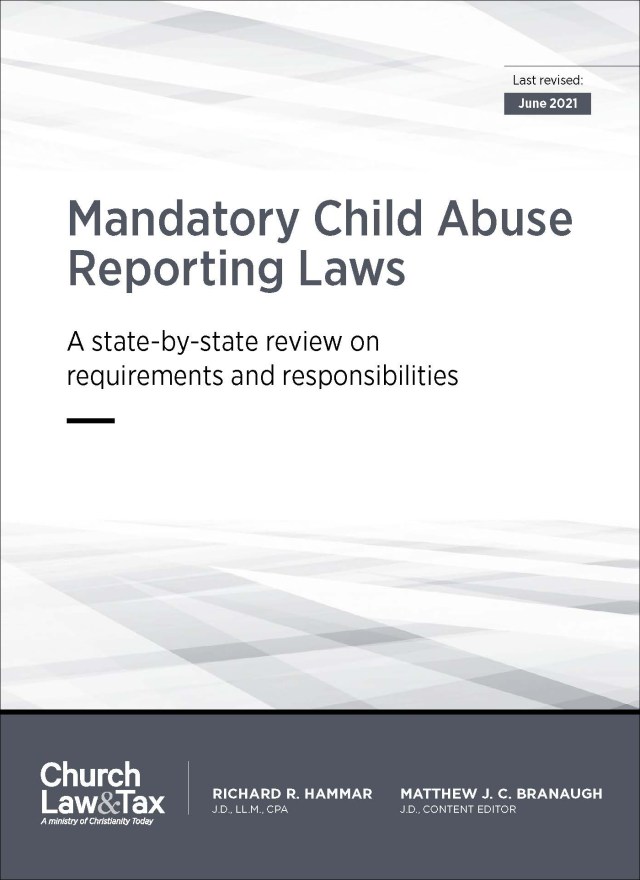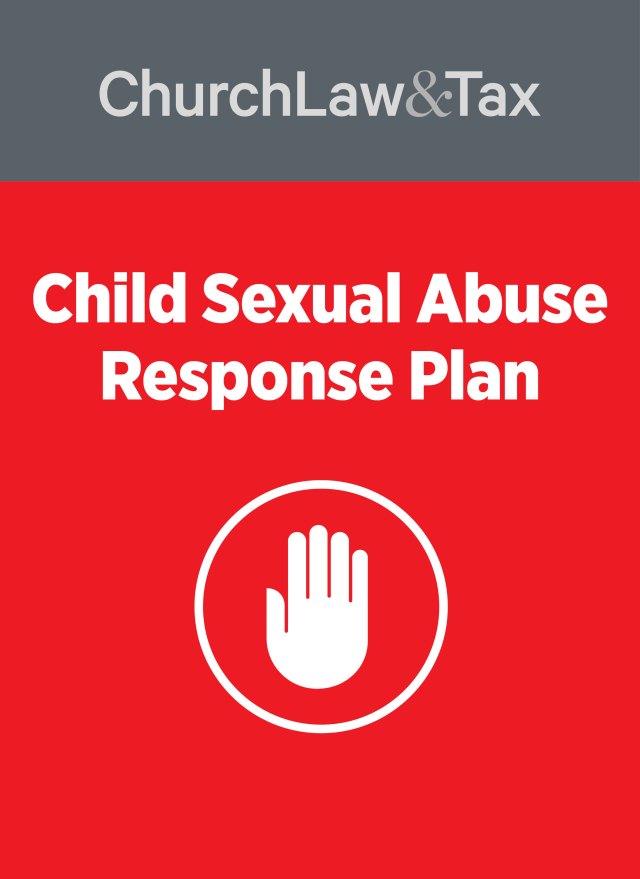Cevenini v. Archbishop of Washington, 707 A.2d 768 (D.C. 1998)
Key point. Minors who are sexually molested by church workers may not sue their church after the statute of limitations has expired. Generally, the statute of limitations begins to run on a minor's 18th birthday. In some states the statute of limitations is suspended if a church "actively conceals" the basis for a lawsuit from a victim. But some courts have ruled that active concealment requires affirmative acts by church leaders, and that failing to disclose information to persons who have not requested it does not amount to an affirmative act of concealment.
A court in the District of Columbia ruled that three adults were barred by the statute of limitations from suing an archdiocese for injuries they suffered as a result of being molested by a priest when they were minors.
In 1975, a priest was assigned to a Catholic church in Maryland, where he remained for seven years. The three victims all were minors during this time, and served as altar boys at the church. They were each molested by the priest on numerous occasions. In 1982 the priest was reassigned to another parish, and in 1986 the archdiocese removed him from the parish ministry altogether and assigned him to work as a chaplain in a nursing home. He was later directed to cease all ministerial functions.
In 1995 the Washington Post published a series of articles disclosing that the archdiocese knew of the priest's pedophilic tendencies long before he assumed his pastoral duties at the victims' church in 1975. The victims, now in their 30s, alleged that it was not until the publication of these articles that they had reason to suspect wrongdoing by the archdiocese with respect to the hiring and supervision of the priest.
A trial court dismissed the lawsuits on the ground that they were barred by the applicable statute of limitations which specifies that such lawsuits must be brought within three years "from the time the right to maintain the action accrues." However, the three-year period does not begin to run for injuries to minors until their eighteenth birthday. In other words, the victims had until their twenty-first birthday to file their lawsuit. Since they missed this deadline by more than ten years, their lawsuits had to be dismissed.
The victims appealed, insisting that the so-called "discovery rule" applied to their claims and that the archdiocese's "fraudulent concealment" of its wrongdoing delayed the statute of limitations until the publication of the Washington Post articles in 1995. The appeals court concluded that the statute of limitations barred the victims' claims whether the discovery rule was applied or not. It noted that under both the general rule and the discovery rule exception, the statute of limitations begins to run when a plaintiff either has actual knowledge of a cause of action or is charged with knowledge of that cause of action.
The court observed that in the District of Columbia, a plaintiff can be charged with notice of his claims "even if he is not actually aware of each essential element of his cause of action. This court has repeatedly held that a claim accrues when the plaintiff knows of (1) an injury, (2) its cause, and (3) some evidence of wrongdoing." The court concluded that
[a]ccording to their complaints, all three [victims] were aware from the outset that it was the archdiocese that had assigned [the priest] to [their church] and that [the priest's] role was that of a subordinate representative of the archdiocese. It is also undisputed that the alleged acts of abuse occurred on church premises, while [the priest] was functioning as a representative of the archdiocese. In these circumstances, we conclude that a reasonable plaintiff would have investigated his potential claims against the archdiocese at the same time that his claims accrued against its representative. Because there is no evidence of fraudulent concealment by the archdiocese, a reasonably diligent investigation would have revealed at least some evidence of wrongdoing on the part of the archdiocese (assuming arguendo that such wrongdoing had occurred). Consequently, we hold that appellants' claims against the archdiocese accrued simultaneously with their claims against the priest.
The court rejected the victims' claim that the statute of limitations should be suspended because of the actions of the archdiocese in concealing from them its responsibility for their injuries. The court conceded that when the party claiming the protection of the statute of limitations has employed "affirmative acts . . . to fraudulently conceal either the existence of a claim or facts forming the basis of a cause of action," such conduct will suspend the statute. But it concluded that the archdiocese did not engage in concealment.
First, the court noted that "it has consistently been the law in the District of Columbia that fraudulent concealment requires something of an affirmative nature designed to prevent discovery of [a] cause of action." Rather than alleging affirmative acts of concealment by the archdiocese, the victims have asserted only that the archdiocese failed to disclose information to them, and that its policy of transferring the priest from one parish to another had the effect of concealing prior allegations of sexual abuse.
The court observed that such assertions, even if true, do not constitute affirmative acts. On the other hand, had the victims requested information about the priest's background from the archdiocese and been refused access to it, the case might have been different. The court concluded that "we are unwilling to hold that a failure to disclose information that has not even been requested constitutes fraudulent concealment. The mere fact of transferring [the priest] from one parish to another could not have had the effect of concealing [the victims'] causes of action against [the priest and archdiocese] nor is there anything in the record to suggest that the archdiocese misrepresented [the priest's] background to [them]." Further, even if the archdiocese had attempted to conceal its identity as a potentially liable party, so long as the victims possessed information which would have enabled them to file a timely claim, the concealment "of the identity of liable parties, unlike the concealment of the existence of a claim, is insufficient to toll the statute of limitations."
Second, even assuming that the Archdiocese engaged in acts of fraudulent concealment, it is a "well established defense to a claim of fraudulent concealment . . . that the plaintiff knew, or by the exercise of due diligence could have known, that he may have had a cause of action." An act of fraudulent concealment by a defendant "does not relieve a plaintiff of his independent duty to pursue his cause of action diligently. On the contrary, the case law makes clear that a claim of fraudulent concealment is available only to a plaintiff who has exercised due diligence in the pursuit of his cause."
The court concluded that the victims in this case did not attempt to investigate any potential claims against the archdiocese until 1995. "Because due diligence is a prerequisite to claiming the protection of the fraudulent concealment exception to the statute of limitations, it is not available to plaintiffs . . . who undertook no investigation whatever for almost twelve years after they first realized that they might have a cause of action."
Application. This case illustrates the view of some courts that the "active concealment" by church leaders that will suspend the statute of limitations in cases of child sexual abuse requires some affirmative act. A mere failure to disclose information about a church worker to parents and others who have not requested it may not satisfy this requirement.


